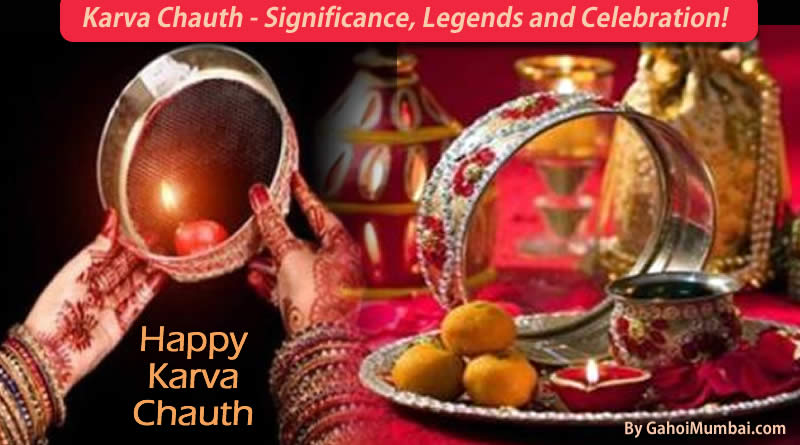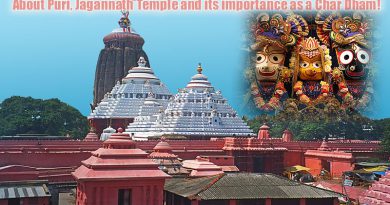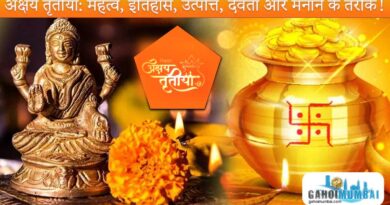Karva Chauth – Significance, Legends and Celebration!
Karva Chauth is an Indian regional festival which is celebrated by Hindu women from some states of India, especially northern states, four days after purnima (a full moon) in the month of Kartika.
On this auspicious Karva Chauth, the married women fast from sunrise to moonrise for the safety and long life of their husbands. The Karva Chauth fast is usually celebrated in the states of Delhi, Haryana, Rajashtan, Punjab, Jammu and Kashmir, Uttar Pradesh, Bihar, Jharkhand, Maharashtra, Himachal Pradesh and Madhya Pradesh.
As per Indian history, Karva Chauth was celebrated as a prayer for the long life of soldiers in the war, and but nowadays, it refers to the long life of a husband.
Karva Chauth’s celebration time and date:
Generally, Karva Chauth is based on the lunisolar calendar which accounts for all astronomical positions, mainly positions of the moon which is used as a marker to analyze important dates. The festival falls on the fourth day after the full moon, in the Hindu lunisolar calendar month of Kartik.
Karva Chauth and its meaning:
As per glossary, Karva is another word for ‘pot’ (a small earthen pot of water) and chauth means ‘fourth’ in Hindi (a reference to the fact that the festival falls on the fourth day of the dark-fortnight, or Krishna paksh, of the month of Kartik).
Karwa Chauth is celebrated in Northern India. One theory is that military campaigns were often conducted by men in far off places whereby men would often leave their wives and children to go off to war. Their wives would often pray for their safe return. The festival also coincides with the wheat-sowing time (i.e., the beginning of the Rabi crop cycle). Big earthen pots in which wheat is stored are sometimes called Karvas, so the fast may have begun as a prayer for a good harvest in this principally wheat-eating region.
As per traditions in some region of India, a few days before Karva Chauth, generally married women would buy new karvas (spherical clay pots) – 7″-9″ in diameter and 2-3 litres size and decorate them on the outside with attractive designs. They would put bangles and ribbons, home-made candy and sweets, make-up items, and small clothes in this Karva or clay pot. The women would then visit each other on the day of Karva Chauth and exchange these karvas.
Karva Chauth Celebration and Preparations:
Married Women start preparation for Karva Chauth a few days in advance, by buying adornments (shringar), jewelry, and puja items, such as the Karva lamps, matthi, henna and the decorated puja thali (plate
On the day of the Karva Chauth fast, women from Punjab awake to eat and drink just before sunrise. In Uttar Pradesh, celebrants eat soot feni with milk in sugar on the eve of the festival. It is said that this helps them go without water the next day. In Punjab, Sargi is a significant part of this pre-dawn meal and always includes fenia. It is customary for the Sargi to be sent or given to the fasting woman by her mother-in-law. If she lives with her mother-in-law, the pre-dawn meal is prepared by the mother-in-law. On Karwa Chauth occasion, fasting women choose to wear karva chauth special outfits like a traditional saari or lehenga to look their best. In some Indian states, women wear traditional outfits of their states.
The fast starts at dawn. Fasting women do not eat during the day. Married women apply henna and other cosmetics to themselves and each other. During the entire day, they meet with friends and relatives. In some Indian states, it is customary to give and exchange painted clay pots filled with put bangles, ribbons, home-made candy, cosmetics and small cloth items (e.g., handkerchiefs).
As for farmers concern, Karva Chauth falls soon after the Kharif crop harvest in the rural areas, it is a good time for community celebrations and gift exchanges. Also, Parents send gifts to their wedded daughters and their children.
In the evening, Wedded women dress in fine clothing and wear jewellery and henna, and wear complete bridal outfits due to fast for husband. The traditional outfits are often auspicious colour like red, gold or orange. The wedded fasting women sit in a circle with their puja thalis. As per tradition, a story of Karva Chauth is recited by an aged woman or a priest. During this, the Karva Chauth puja song is sung collectively the singers perform the feris (passing their thalis around in the circle).
The first six describe some of the activities that are taboo during the fast and the seventh describes the lifting of those restrictions with the conclusion of the fast. The forbidden activities include weaving cloth (kumbh chrakhra feri naa), pleading with or attempting to please anyone (ruthda maniyen naa), and awakening anyone who is asleep (suthra jagayeen naa).
For the first six feris they sing these below mentioned lines as “Veero kudiye Karvara, Sarv suhagan Karvara, Aye katti naya teri naa, Kumbh chrakhra feri naa, Aar pair payeen naa, Ruthda maniyen naa, Suthra jagayeen naa, Ve veero kuriye Karvara, Ve sarv suhagan Karvara”
For the seventh feri, they sing this beautiful lyrics as “Veero kudiye Karvara, Sarv suhagan Karvara, Aye katti naya teri nee, Kumbh chrakhra feri bhee, Aar pair payeen bhee, Ruthda maniyen bhee, Suthra jagayeen bhee, Ve veero kuriye Karvara, Ve sarv suhagan Karvara”
In Uttar Pradesh region, a priest or an elderly woman of the family recites the tale Veervati. Celebrants make Gauri, Ganesh and Shankar idols with mud and decorate them with colourful and bright clothes and jewellery. While exchanging Karvas seven times, they sing lyrics like “Sadaa suhagan karve lo, Pati ki pyari karve lo, Saat bhaiyon ke behen karve lo, Vart karni karve lo, Saas ki pyaari karve lo”
Thereafter, the fasting women offer baayna (a melange of goodies like halwa, puri, namkeen mathri, meethi mathri, etc.) to the idols (mansana) and hand over to their mother-in-law or sister-in-law.
The fera ceremony finished, the women wait for the rising of the moon. Once the moon is visible, it is customary for a fasting woman, to view moon or its reflection in a vessel filled with water, through a sieve, or through the cloth of a dupatta. Water is offered (arka) to the moon (som or chandra, the lunar deity) to get its blessings. In some areas, the woman prays for her husband’s life. It is believed that at this stage, spiritually strengthened by her fast, the woman can successfully confront and defeat death (personified by Yama). In Rajasthan state, the women recite “Like the gold necklace and the pearl bracelet, just like the moon may my suhaag always shine brightly.”
In the concluding step, Her husband then takes the water from the thali and offers it to his wife; taking her first sip of water during the day, the fast is now broken and now the woman is ready to have a complete meal.
Significance, Legends and History of Karva Chauth:
There are various traditional stories related with the Karva Chauth festival. All related stories give the message of woman’s willpower and fighting for saving her husband life.
Queen Veervati Tale for Karva Chauth:
An attractive queen called Veervati was the only sister of seven devoted brothers. She spent her first Karva Chauth as a wedded woman at her parents’ house. She satrted a strict fast after sunrise but, by evening, was frantically waiting for the moonrise as she suffered severe thirst and hunger. Her seven brothers couldn’t bear to see their sister in such suffering and created a mirror in a pipal tree (Ficus religiosa) that made it look as though the moon had risen. The sister mistook it for the moon and broke her fast. The instant she took the first slice of food, she sneezed. In her second bit she found hair. After the third she learned the news of her husband, the king, was dead. Brokenhearted, she wept through the night until her shakti forced a Goddess to appear and ask why she crying. When the queen explained her suffering, the Goddess disclosed how she had been fooled by her brothers and instructed her to repeat the Karva Chauth fast with complete devotion. When Veervati repeated the fast, Yama was forced to restore her husband to life.
A Legend of Mahabharata Karva Chauth:
During the Mahabharata era, Draupadi is said to have observed this fast. Once Arjun went to the Nilgiris for penance and the rest of the Pandavas met numerous problems in his absence. Draupadi recalled Lord Krishna and requested for help. Lord Krishna reminded her that on an earlier occasion, when Goddess Parvati had sought Lord Shiva’s help under similar conditions, she had been advised to observe the fast of Karva Chauth. As per legend, Shiva tells Parvati the story of Veervati to describe the Karva Chauth fast. Draupadi followed the instructions and observed the fast with all its rituals. Consequently, the Pandavas were able to overcome their difficulties.
The legend of Karva for Karva Chauth:
A famous woman named Karva was deeply dedicated to her husband. Her passionate love and dedication towards him gave her shakti (spiritual power). While taking bath at a river, her husband was caught by a crocodile. Karva bound the crocodile with cotton yarn and asked Yama (the god of death) to send the crocodile to hell. Yama rejected. Karva threatened to curse Yama and abolish him. Yama, frightened of being cursed by Pati-vrat (devoted) wife, sent the crocodile to hell and blessed Karva’s hubby with long life. Karva and her husband enjoyed many years of wedded bliss.
Satyavan and Savitri Karva Chauth:
When Lord Yama came to procure Satyavan’s soul, Savitri pleaded him to grant him life. When he rejected, she stopped eating and drinking and followed Yama who carried away her dead husband. Yama told that she could ask for any other boon except for the life of her husband. Savitri asked that she be blessed with children. Yama agreed. Being a “‘Pati-Vrat'” (devoted) wife, Savitri would never let any other man be the father of her children. Yama was left with no other option but to restore Savitri’s husband to life. Generally, this tale refers to a different punima and not Karva Chauth.
Karva Chauth’s special cuisine Sargi and Recipe:
An auspicious Karwa Chauth is a customary Hindu festival where women fast from sunrise to moonrise for their partner’s longevity, prosperity and good health. The festival falls during the Krishna Paksha Chaturthi in the month of Kartik. Wedded women who fast, get up early in the morning and eat Sargi given to them by their mother in laws. It is considered as a blessing from the mother-in-law to the daughter-in-law so she can accomplish her fast fruitfully. The fast of Karwa Chauth is a nirjala fast (without food and water) and sargi is the only thing that women eat at the dawn until moonrise.
What is sargi?
Sargi is the significant and energetic pre-dawn meal that all married women who fast, eat before they start the day.
Fresh fruits as Sargi:
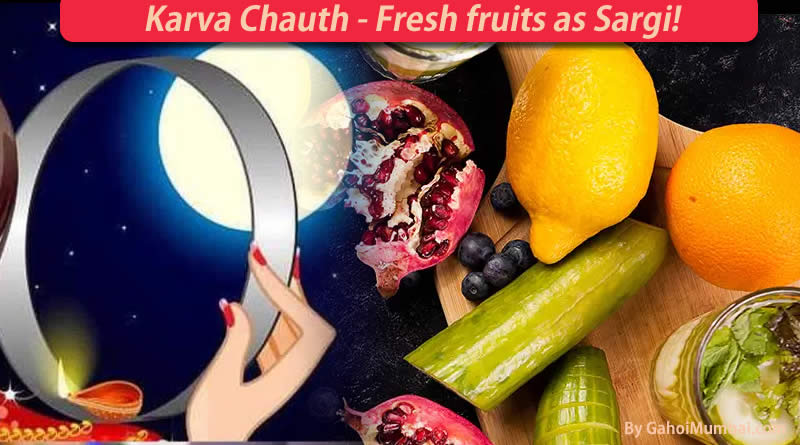
Juicy fruits have a high water content and as the fast is without water, eating fresh fruits can help make up for the loss of hydration. Citrus fruits and pomegranate are a must-have along with other fresh fruits.
Dry fruits as Sargi:
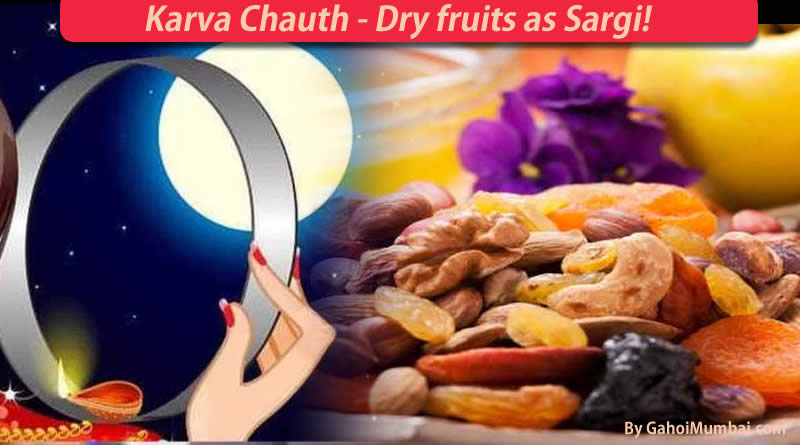
Highly energetic and full of nutrients dry fruits are an essential part of almost all types of fasts. You can eat cashews, almonds, raisins and pistachios.
Coconut as Sargi:
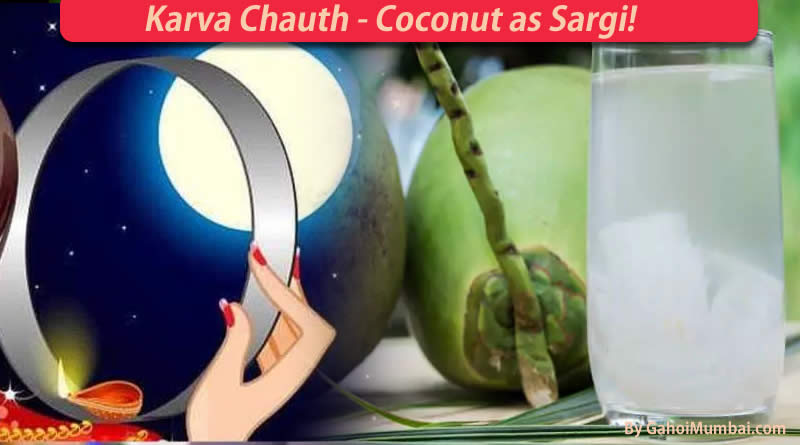
Coconut contains nutrients that stabilizes blood sugar and keeps you hydrated.
Sewaiyaan as Sargi:

Sewaiyaan is a significant part of sargi because it keeps you full and energetic throughout the day.
Cooked food as Sargi:
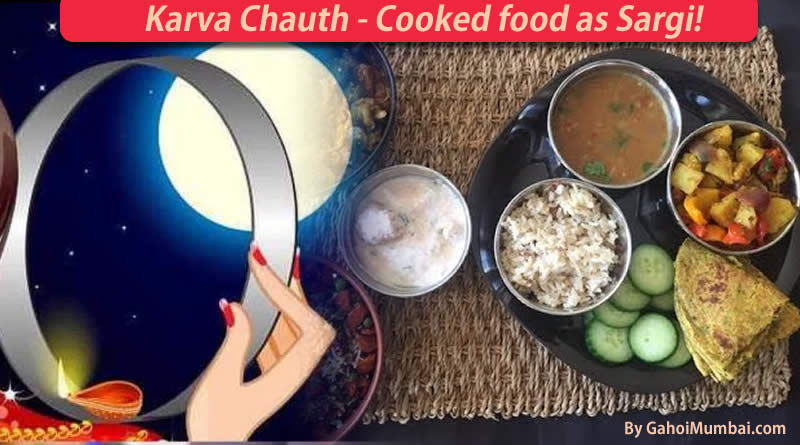
You can eat two rotis with a simple sabji. You can also eat stuffed parantha. It will keep you energetic for the rest of the day.
Sweets as Sargi:
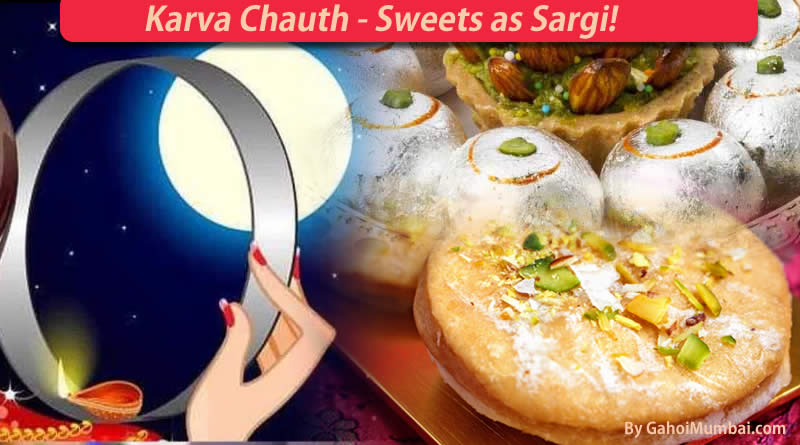
you can also eat sweet. It will help you to be an energetic and lively.
Whe you should eat sargi?
As we all know that sargi is the pre-dawn meal, it should be eaten before sunrise. Women wake up around 3 – 4 am because they have to take a bath and prepare their meals. Most of them eat their sargi before 5 am. Numerous women prefer to have it with other women who are fasting in their home.
Karva Chauth 2019:
As per the Hindu lunisolar calendar, Karwa Chauth falls on the fourth day after the full moon in the holy month of Kartik. This year, the festival is being celebrated on Thursday, October 17, 2019.
Karva Chauth in Bollywood Celebs:
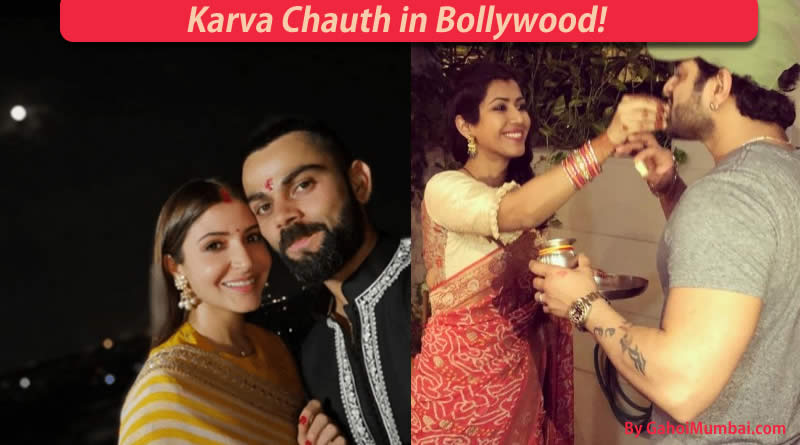
Karva Chauth in Bollywood Celebs 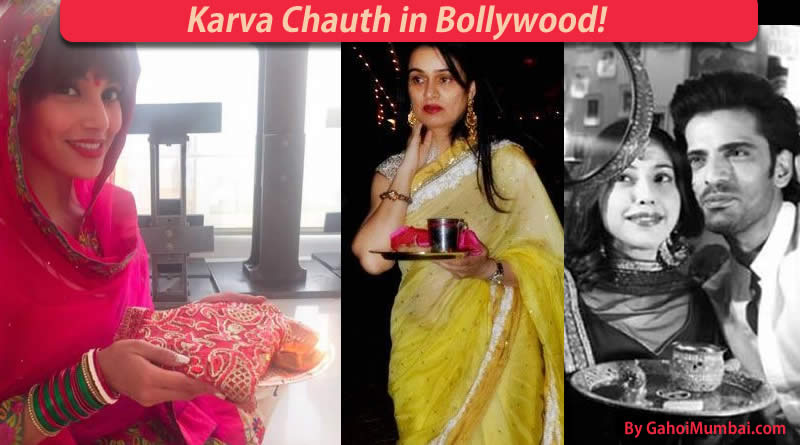
Karva Chauth in Bollywood Celebs 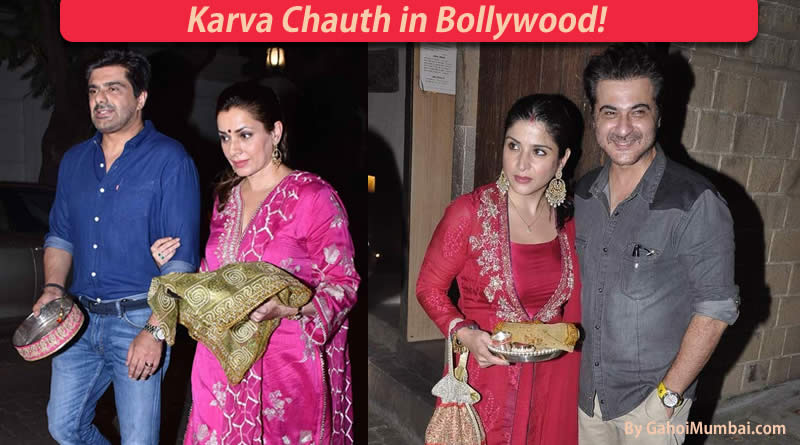
Karva Chauth in Bollywood Celebs 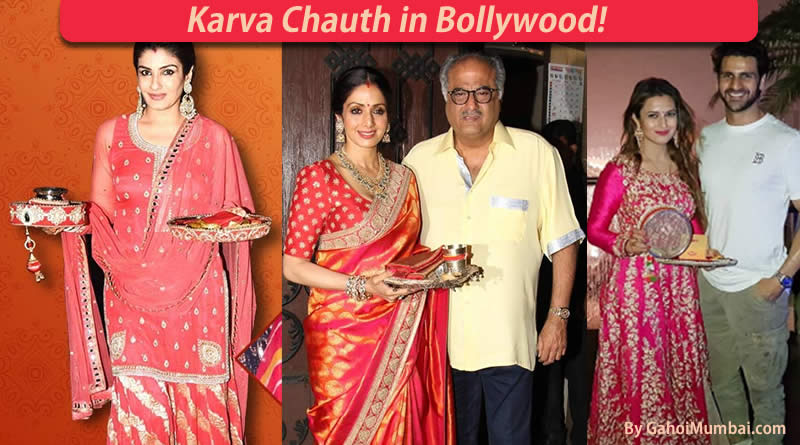
Karva Chauth in Bollywood Celebs 
Karva Chauth in Bollywood Celebs
Bollywood celebs celebrate Karva Chauth with great enthusiasm and in best manner as possible. Enjoy some photos of Karva Chauth celebrations by Bollywood celebs.

